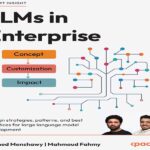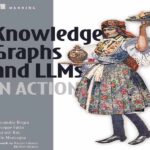- عنوان کتاب: Applied Survey Data Analysis
- نویسنده: Brady T. West, Steven G. Heeringa
- حوزه: تحلیل دادهها
- سال انتشار: 2025
- تعداد صفحه: 559
- زبان اصلی: انگلیسی
- نوع فایل: pdf
- حجم فایل: 4.90 مگابایت
«تحلیل کاربردی دادههای نظرسنجی (ASDA)، ویرایش سوم»، مانند دو ویرایش اول این کتاب، به عنوان یک راهنمای پیشرفته برای تحلیل آماری کاربردی و تفسیر دادههای نظرسنجی نوشته شده است. هنگامی که ویراستاران در ابتدا سوال ویرایش سوم را مطرح کردند، ما بار دیگر مجبور شدیم سوالات مهم – «آیا مطالب جدید کافی وجود دارد؟» و «آیا پیشرفتهای مهمی در نظریه، روشها و نرمافزار وجود داشته است؟» – را بپرسیم تا بهروزرسانی ویرایش دوم ASDA در سال ۲۰۱۷ را توجیه کنیم. ما به عنوان یک تیم مشترک نویسندگان توافق کردیم که پس از انتشار ویرایش دوم ASDA، تحولات جدید را در تمام این ابعاد به دقت زیر نظر داشته باشیم و این تحولات را در وبسایت کتاب مستند کنیم. نگاهی گذرا به فهرستهای گسترده نشریات جدید و توسعههای نرمافزاری در وبسایت، پاسخهای آسانی به این سوالات ارائه داد و ما با پیشنهادی برای این ویرایش سوم در سال ۲۰۲۳ پیش رفتیم. از داوران ناشناس این پیشنهاد برای بینشها و پیشنهادات سازندهشان که همگی در این ویرایش سوم ASDA گنجانده شدهاند، تشکر میکنیم. نگارش این ویرایش سوم نه تنها فرصتی برای بهروزرسانی مطالب قبلی و ارائه پیشرفتهای جدید در روشها و نرمافزارهای کاربردی فراهم کرده است، بلکه بار دیگر دریچهای به سوی پوشش حوزههای جدید و نوظهور در تحلیل دادههای پیمایشی گشوده است. ویرایش سوم اکنون شامل موارد زیر است: • روشهای بیزی کاربردی برای تحلیل دادههای پیمایشی نمونه پیچیده (فصل ۳)، شامل تصاویری از رویکردهای بیزی جایگزین برای مثالهای تحلیل موجود در تمام فصلهای دیگر با استفاده از نرمافزارهای موجود • روشهایی برای تحلیل دادههای پیمایشی جمعآوریشده از نمونههای غیراحتمالی و کاربردهای تکنیکهای یادگیری ماشین برای مجموعه دادههای پیمایشی نمونه پیچیده، شامل مثالهای حلشده با استفاده از نرمافزارهای موجود (فصل ۱۳) • یک وبسایت کاملاً بازسازیشده برای کتاب، حاوی کد بهروز شده برای هر یک از مثالهای حلشده در جدیدترین نسخههای هر بسته نرمافزاری (https://websites.umich.edu/~surveymethod/asda/) • تمرینهای جدید پایان فصل، شامل مثالهای بیزی، با مجموعه دادههای خاص مورد نیاز که به وضوح در وبسایت کتاب نشان داده شده است، و مجموعه راهحلها که توسط نویسندگان برای هر مدرسی که از ASDA به عنوان کتاب درسی استفاده میکند، تهیه و در دسترس است • خلاصههای بهروز شده از پیشرفتهای مهم در ادبیات در تمام فصلها • مروری بهروز شده بر رویههای نرمافزاری که در حال حاضر برای تحلیل دادههای پیمایشی نمونه پیچیده در تمام بستههای نرمافزاری آماری اصلی موجود است (پیوست الف) فصلهای این ویرایش سوم ویرایشهای بعدی همچنان به ترتیب مرتب شدهاند و هر فصل بر اساس مطالب پوشش داده شده در فصلهای قبلی است. فصل ۱ زمینه مهمی را برای فصلهای باقیمانده فراهم میکند، به طور خلاصه به بررسی تحولات تاریخی میپردازد؛ تعامل حساس در محیط تحقیقاتی امروز بین به حداقل رساندن ریسک افشا، حریم خصوصی تفاضلی و در دسترس قرار دادن دادههای نظرسنجی برای عموم برای اهداف تحقیقاتی را مورد بحث قرار میدهد؛ و یک فرآیند گام به گام برای نزدیک شدن به یک مسئله تحلیل نظرسنجی را ارائه میدهد. محتوای بهروز شده و گسترده فصلهای ۲ تا ۴ این ویرایش سوم، خواننده را با ویژگیهای اساسی طرحهای نمونه پیچیده آشنا میکند و نشان میدهد که چگونه ویژگیهای طراحی مانند طبقهبندی، نمونهگیری خوشهای و وزندهی به راحتی در روشها و نرمافزارهای آماری برای تخمین و استنتاج نظرسنجی گنجانده میشوند. فصل ۳ مروری کلی بر تحولات جدید در رویکردهای بیزی برای تحلیل دادههای نظرسنجی نمونه پیچیده ارائه میدهد که هنگام بررسی رویکردهای جایگزین بیزی برای مثالهای تحلیل، به آنها اشاره خواهیم کرد. بررسی روشهای آماری برای تحلیل دادههای پیمایشی در فصلهای ۵ و ۶ با پوشش تحلیلهای توصیفی تکمتغیره (یعنی تکمتغیره) و تحلیلهای دو متغیره ساده (یعنی دومتغیره) از متغیرهای پیوسته و مقولهای آغاز میشود. فصل ۷ مدل رگرسیون خطی را برای متغیرهای وابسته پیوسته ارائه میدهد. روشهای مدلسازی رگرسیون خطی تعمیمیافته برای دادههای پیمایشی در فصلهای ۸ و ۹ پوشش داده شدهاند. فصل ۱۰ مربوط به روشهای تحلیل تاریخچه رویداد دادههای پیمایشی، از جمله مدلهایی مانند مدل مخاطرات متناسب کاکس و مدل مخاطرات زمان گسسته است و پوشش جدیدی از روشهای سانسور فاصلهای ارائه میدهد. فصل ۱۱ تحلیل دادههای پیمایشی طولی، از جمله پیشرفتهای جدید از زمان انتشار ویرایش دوم را پوشش میدهد. فصل ۱۲ روشهایی را برای مدیریت مشکلات دادههای گمشده در مجموعه دادههای پیمایشی، از جمله جانهی چندگانه و جانهی کسری مبتنی بر طراحی، معرفی میکند. در نهایت، پوشش روشهای آماری برای تحلیل دادههای نظرسنجی در فصل ۱۳ با بحثی در مورد پیشرفتهای جدید در تکنیکهای آماری پیشرفته برای دادههای نظرسنجی، از جمله تحلیل چندسطحی، مدلسازی معادلات ساختاری، روشهای تحلیل دادههای نظرسنجی از نمونههای غیراحتمالی، یادگیری ماشین، تخمین ناحیه کوچک و روشهای ناپارامتری، به پایان میرسد…
Applied Survey Data Analysis (ASDA), Third Edition, like the first two editions of this book, is written as a state-of-the-art guide to the applied statistical analysis and interpretation of survey data. When the editors initially raised the question of a third edition, we once again had to ask the important questions – “Is there sufficient new material?” and “Have there been important advances in theory, methods, and software?” – to justify an update to our 2017 second edition of ASDA. We agreed as a co-author team to keep a careful eye on new developments along all these dimensions after the publication of the second edition of ASDA and document these developments on the book’s website. A quick look at the extensive lists of new publications and software developments on the website provided us with easy answers to these questions, and we proceeded with a proposal for this third edition in 2023. We thank the anonymous reviewers of this proposal for their constructive insights and suggestions, all of which have been incorporated into this third edition of ASDA. Writing this third edition has not only provided us with an opportunity to update the previous material and communicate new advances in applied methods and software but also once again opened the door to covering new and emerging areas in the analysis of survey data. The third edition now includes: • Applied Bayesian methods for the analysis of complex sample survey data (Chapter 3), including illustrations of alternative Bayesian approaches to existing analysis examples in all other chapters using available software • Methods for the analysis of survey data collected from non-probability samples and applications of machine learning techniques to complex sample survey data sets, including worked examples using available software (Chapter 13) • A completely revamped website for the book, containing updated code for each of the worked examples in the newest versions of each software package (https:// websites.umich.edu/~surveymethod/asda/) • New end-of-chapter exercises, including Bayesian examples, with the specific data sets required clearly indicated on the book’s website, and solution sets prepared and available from the authors for any instructors using ASDA as a course textbook • Updated summaries of important developments in the literature in all chapters • An updated review of software procedures that are currently available for the analysis of complex sample survey data in all the major statistical software packages (Appendix A) The chapters of this third edition continue to be organized in sequence, with each chapter building on material covered in the preceding chapters. Chapter 1 provides important context for the remaining chapters, briefly reviewing historical developments; discussing the sensitive interplay in today’s research environment between minimizing disclosure risk, differential privacy, and making survey data available to the public for research purposes; and laying out a step-by-step process for approaching a survey analysis problem. The updated and extended content of Chapters 2 through 4 of this third edition will introduce the reader to the fundamental features of complex sample designs and demonstrate how design characteristics such as stratification, cluster sampling, and weighting are easily incorporated into the statistical methods and software for survey estimation and inference. Chapter 3 provides a general overview of new developments in Bayesian approaches to the analysis of complex sample survey data that we will continue to refer to when considering alternative Bayesian approaches to the analysis examples. Treatment of statistical methods for survey data analysis begins in Chapters 5 and 6 with coverage of univariate (i.e., single-variable) descriptive and simple bivariate (i.e., twovariable) analyses of continuous and categorical variables. Chapter 7 presents the linear regression model for continuous dependent variables. Generalized linear regression modeling methods for survey data are covered in Chapters 8 and 9. Chapter 10 pertains to methods for event history analysis of survey data, including models such as the Cox proportional hazards model and the discrete time hazard model, and provides new coverage of methods for interval censoring. Chapter 11 covers the analysis of longitudinal survey data, including new developments since the publication of the second edition. Chapter 12 introduces methods for handling missing data problems in survey data sets, including multiple imputation and design-based fractional imputation. Finally, the coverage of statistical methods for survey data analysis concludes in Chapter 13 with a discussion of new developments in advanced statistical techniques for survey data, including multilevel analysis, structural equation modeling, methods for the analysis of survey data from non-probability samples, machine learning, small-area estimation, and nonparametric methods. Each of these chapters presents alternative Bayesian approaches to the example analyses, when possible, with a focus on comparing the finite population inferences that arise when following the different approaches. Survey data analysts continue to have access to many high-quality statistical software choices. We have once again emphasized Stata (Version 18) for most of the book examples, due to its ease of use and flexibility for survey data analysis, but this third edition integrates several new examples of Bayesian approaches using contributed packages in the freely available R software. We also continue to demonstrate the use of available software and code for SAS, SUDAAN, SPSS, and Mplus for specific types of analyses. All example analyses presented in the book chapters have once again been replicated to the greatest extent possible using the newest versions of the SAS, SPSS, SUDAAN, IVEware, R, Mplus, and WesVar software packages on the book’s website (https://websites.umich. edu/~surveymethod/asda/). We have also provided information about available tools in Python for the analysis of survey data. The ASDA website aims to provide survey analysts and instructors with additional resources in the following areas: links to new publications and an updated bibliography for the survey analysis topics covered in Chapters 5–13; links to sites for example survey data sets; replication of the code and output for the analysis examples in the Stata, SAS, SUDAAN, IVEWare, R, IBM SPSS, Mplus, and WesVar software; answers to frequently asked questions (FAQs); short technical reports related to special topics in applied survey data analysis; and reviews of statistical software updates and any resulting changes to the software code or output for the analysis examples. As was the case with previous editions of ASDA, we will strive to keep this website updated as new developments emerge. We owe a debt to our many students from the Joint Program in Survey Methodology (JPSM), the Michigan Program in Survey and Data Science (PSDS), the Survey Research Center’s Summer Institute for Survey Research Techniques, Coursera, Statistics.com, and Statistical Horizons who have studied with us over the years. We also owe a debt to our mentors and colleagues who, over the years, have instilled in us a passion for statistical teaching and consultation: Leslie Kish, Irene Hess, Graham Kalton, Morton Brown, Jim Lepkowski, Julian Faraway, Edward Rothman, Rod Little, Trivellore Raghunathan, Mike Elliott, Stas Kolenikov, and Yajuan Si. We wish to once again sincerely thank the staff at Chapman & Hall/CRC Press, especially Rob Calver, for their continued guidance and support over the years. The Survey Research Center at the University of Michigan’s Institute for Social Research provided Dr. West with generous sabbatical time in early 2024 that was crucial for the development of this third edition, and for that he is very grateful. Finally, we express our sincere thanks and appreciation to our families for their love and support while work on this third edition was ongoing.
این کتاب را میتوانید از لینک زیر بصورت رایگان دانلود کنید:
Download: Applied Survey Data Analysis




































نظرات کاربران